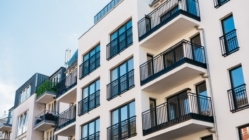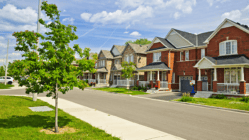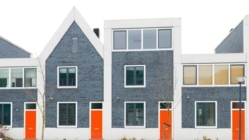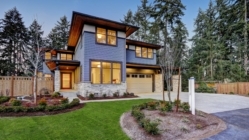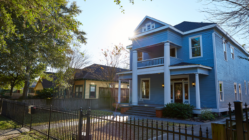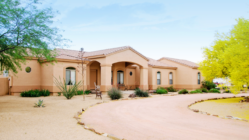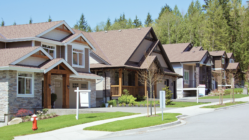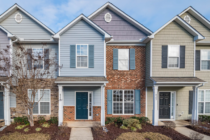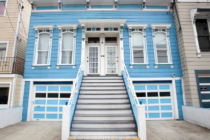One of the most crucial metrics for assessing real estate profitability and risk is the capitalization rate, commonly known as the cap rate.
What Exactly is a Cap Rate?
What does cap rate mean? At its core, the cap rate is a metric that evaluates the return on an investment property. It does this by examining the Net Operating Income (NOI) a property generates. Think of the capitalization rate as a tool for assessing the potential annual return of a property, helping you gauge how much you might earn—or lose—from your investment. Curious about how this works in practice? We’ll break it down further in the next section.
Calculating the Cap Rate
Calculating the cap rate is simpler than you might think! The formula is:
Cap Rate = (Net Operating Income / Current Market Value) × 100
The NOI should include all income from the property minus operating expenses, excluding mortgage payments and income taxes.
This formula incorporates three key elements: NOI, current market value, and a conversion to percentage. Let’s explore each element:
Net Operating Income (NOI)
To determine NOI, factor in all relevant expenses like property management fees, maintenance costs, property taxes, insurance, and utilities. Remember, mortgage interest and income tax are not included in this calculation. Understanding NOI is crucial for a precise cap rate.
Current Market Value
Determining the current market value of your property is vital. This involves research and comparison with similar sales in the area. At JVM Lending, we offer rate comparison tools to assist you in this process, whether for purchasing or refinancing.
The Formula in Action
Once you have your NOI and current market value, simply divide the former by the latter and multiply by 100. This percentage gives you an estimate of the annual return, considering both NOI and market value. A higher cap rate often suggests a higher return, but don’t forget to consider other factors like location, market conditions, and your investment goals.
What is a Good Cap Rate?
The answer isn’t one-size-fits-all; it varies based on factors like risk tolerance, market value, property type, economic conditions, and financing costs. While some investors won’t consider properties with less than an 8% cap rate, others are more flexible.
What Is A Good Cap Rate For A Residential Rental Property?
Our experts suggest that an optimal cap rate typically ranges between 5 to 6 percent. Here’s a breakdown of what different ranges might mean:
- Low Risk, Stable Income (4%-6%): Ideal for investors seeking long-term stability in established areas like residential properties.
- Balanced Risk and Return (6%-8%): For those wanting a balance between risk and return, typically in stable commercial properties with moderate growth potential.
- Higher Risk, Potential for Growth (8%-12%): Suited for investors ready for higher risk in exchange for growth potential, often in emerging markets or properties ripe for value addition.
Why Residential Investors Often Ignore Cap Rates
While cap rates are an essential concept for every investor to understand, many residential investors do not focus on them. They instead focus on such concepts as “cash on cash returns,” where they simply take their net annual cash flow (after all expenses and mortgage payments) and divide them by the total cash invested in the property. Many residential investors also focus on the tax advantages and potential appreciation associated with residential rental properties, as well as the long-term retirement opportunities residential real estate offers once the mortgages are paid down.
View mortgage rates for
April 26, 2024
Factors That Influence Cap Rates
Capitalization rates are influenced by a multitude of factors. Understanding these factors is essential for investors to make informed decisions. Let’s delve deeper into each of these aspects:
Location
The adage “location, location, location” holds true when it comes to cap rates. The capitalization rate is intricately linked to the property’s location, as this determines the demand and stability of the investment.
- Prime Areas: Properties located in prime urban areas or near essential amenities like schools, hospitals, shopping centers, and public transportation often command lower cap rates. The reason is simple – these areas are high in demand, promising consistent rental income and lower vacancy rates.
- Emerging Neighborhoods: On the flip side, properties in up-and-coming neighborhoods or areas undergoing revitalization might present higher cap rates. These areas carry more risk due to their transitional nature, but they also offer the potential for significant property value increases and rental growth.
- Rural vs Urban Dynamics: Rural properties typically experience higher capitalization rates compared to urban counterparts. The limited demand and potential for lower rent in rural areas contribute to this difference.
Property Type & Market Segment
The type of property you invest in significantly affects the cap rate, primarily due to varying levels of demand, risk, and income potential.
Residential properties, such as single-family homes and multifamily units, attract lower cap rates. These properties often ensure a steady income stream, especially in areas with high rental demand. However, luxury residential properties can have higher cap rates due to their higher maintenance costs and potential for longer vacancies.
Lease Terms & Tenant Quality
The structure of lease agreements and the quality of tenants are crucial yet often underestimated factors affecting capitalization rates.
- Lease Duration: Properties with longer lease terms usually have lower cap rates. These long-term leases provide a predictable income stream and reduce the risk of vacancy.
- Tenant Creditworthiness: The financial stability of tenants plays a significant role. Properties leased to reputable, financially secure individuals often have lower cap rates due to the reduced risk of default.
- Lease Structure: The nature of the lease (e.g., triple-net leases where tenants bear most costs) can also impact cap rates. Leases transferring more expenses and responsibilities to tenants can lead to lower rates as they reduce the owner’s overhead and risk.
By thoroughly understanding these factors, investors can better gauge the potential risks and returns of their real estate investments. JVM Lending stands ready to guide you through this complex landscape, ensuring your investments are sound and tailored to your financial goals.
Frequently Asked Questions
What Is a Cap Rate in Real Estate?
A cap rate, or capitalization rate, is a metric used in real estate to assess the return on an investment property. It is calculated by dividing the Net Operating Income (NOI) of the property by its current market value, then multiplying by 100 to get a percentage. This figure gives an indication of the potential return on investment.
Why Is the Cap Rate Important?
Cap rates are important because they provide a quick, comparative measure of a property’s profitability and risk. It helps investors understand the return they can expect on their investment and compare different properties in a standardized way.
Can Cap Rates Predict Property Value Growth?
While capitalization rates are useful for evaluating current profitability, they are not always reliable predictors of future property value growth. Factors such as market trends, location changes, and property improvements also play significant roles in property value growth.
What Are the Risks of Relying Solely on Cap Rates for Investment Decisions?
Relying solely on cap rates can be risky as it doesn’t take into account potential changes in property value, market conditions, financing costs, and unexpected expenses. A comprehensive analysis including capitalization rate, cash flow, and other financial metrics is recommended for a balanced view.
How Can Changes in the Market Impact Cap Rates?
Market changes such as interest rate fluctuations, economic growth, and changes in supply and demand can impact cap rates. Generally, in a growing economy, they may compress, while in a declining market, they may increase.
Is a Higher or Lower Cap Rate Better?
The preference for higher or lower cap rates depends on the investor’s strategy and risk tolerance. A higher rate typically indicates a potentially higher return but comes with higher risk. Conversely, a lower rate suggests a safer investment with a potentially lower return.
Can Cap Rates Help in Comparing Properties in Different Locations?
Yes, they can be a useful tool for comparing the profitability of properties in different locations. However, it’s important to consider other factors such as local market conditions, property types, and growth potential in the analysis.
Partner with JVM Lending for Expert Real Estate Advice
Looking for expert guidance on navigating the real estate market for properties that offer stable returns and minimized risks? JVM Lending is here to help. We offer comprehensive services for purchasing residential real estate assets tailored to your investment needs. If you have more questions or need personalized advice on your real estate investments, feel free to contact JVM Lending.
For personalized advice, reach out to us at (855) 855-4491 or [email protected], or submit your application here to get started. Let’s work together to make your real estate investments a success!


